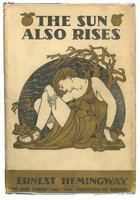Susan Bordo, the Body Text, and Mental Disorder
First, I just want to say I agree with much of what Bordo says in the article. Women, as described by Bordo, are subjected to control over the body based on changing social ideas of femininity constructed by patriarchal society. Using the contemporary ideology of femininity, Bordo sees the excesses of the so-called “feminine” traits as counterproductive for women, with the ultimate result being—using the body as a text—anorexia nervosa. Bordo writes: “The emaciated body of the anorectic, of course, immediately presents itself as a caricature of the contemporary ideal that, despite the game resistance of racial and ethnic difference, has become the norm for women today” (2367). According to Bordo, this “caricature” of the contemporary female figure is the end result of an ideal based mostly on the visual representation of woman in films, television, and magazines. In this manner, the body is a text in which one can “read” various underlying cultural and political statements about gender. Although, as a literature student, I find the idea of the body as a text appealing, this idea ultimately leads to the problems I have with Bordo’s arguments. If one is to read the anorectic body as a text—as I shall now do—one must, at the very least, take into account the actual neurosis with which the text (a human being) was created. I agree that the “thin ideal” culture of America leads to the mass problem of anorexia, but when I read “the text,” I see the result of an unhealthy social control over the body, and not one of unconscious protest. Basically, the problems I have with Bordo are mostly in the section titled “Protests and Retreat in the Same Gesture.” In referring to a claim by Susie Orbach, Bordo writes: “The anorectic is engaged in a ‘hunger strike,’ as Orbach calls it, stressing that this is a political discourse, in which the action of food refusal and dramatic transformation of body size ‘expresses with [the] body what [the anorectic] is unable to tell us with words’—her indictment of a culture that disdains and suppresses female hunger, makes women ashamed of their appetites and needs, and demands that woman constantly work on the transformation of their body” (2370). I don’t see the behavior of the anorectic as indicting a culture with the exception that it is the end result of bad social constructs. The behavior of the anorectic is exemplary of the negative forces put upon women by a patriarchal culture, and the description of anorexia as being a protest, or a “hunger strike,” lessens the severe nature of a true problem and does not adequately tackle the complexities of the issue. (Bordo writes: “The anorectic, of course, is unaware that she is making a political statement.” Perhaps it’s because she’s not making a political statement.) I also took issue with Bordo’s politicizing of agoraphobia, which is a serious debilitating mental issue that often accompanies other anxiety disorders. In describing past political writing on the subject, Bordo writes: “The literature of protest includes functional as well as symbolic approaches. Robert Seidenberg and Karen DeCrow, for example, describe agoraphobia as a ‘strike’ against ‘the renunciations usually demanded of women’ and the expectations of housewifely functions such as shopping, driving the children to school, accompanying their husbands to social events” (2370). And earlier in the article, Bordo writes in the fictional voice of a female agoraphobic: “You want me in this home? You’ll have me in this home—with a vengeance!” (2367). Again, like Bordo’s discussion of anorexia (which I believe is better suited for a discussion of the body as text than agoraphobia), describing a mental disorder as a political act lessens the severity of a real problem, and unfairly simplifies the true nature of a complex issue.
In writing this blog, I’ve come to the conclusion that I may be too literal in my reading of Bordo. (One of the above quotations actually mentions the approach as symbolic.) If I were to read a novel in which an anorexic character was depicted in contemporary, visually based surroundings, depending on the attitude of the character, I might actually describe her behavior as political. Furthermore, if I were to read about an agoraphobic woman in fiction who is depicted in a similar manner in which Bordo presents the agoraphobic female, I would probably describe her agoraphobia as a reaction to patriarchal forces. Basically, I don’t really know what to think of the whole thing, which perhaps cheapens this blog. However, this is my first reaction to reading Bordo, which I’ll share with others, for better or for worse.


















